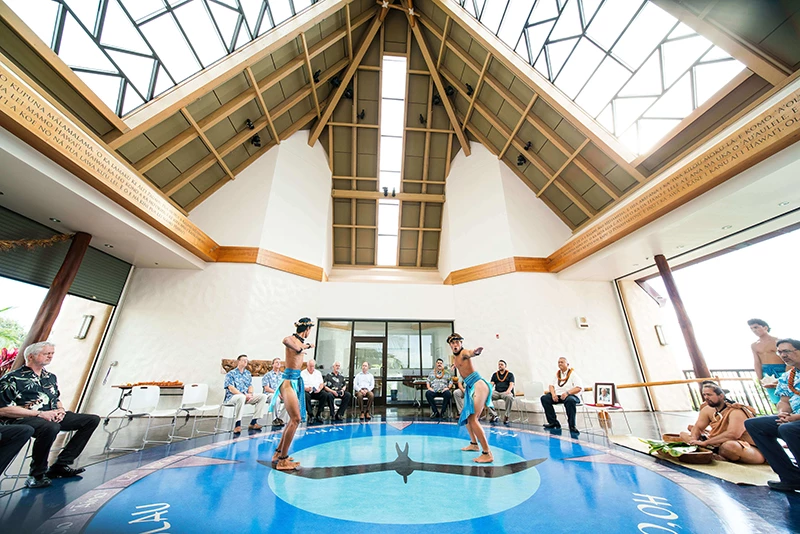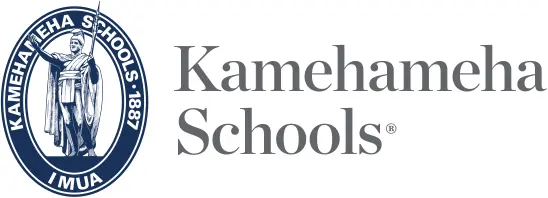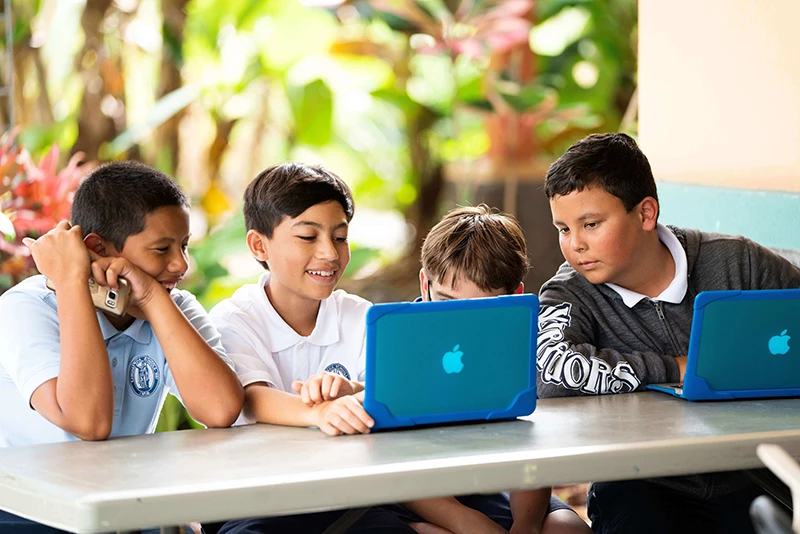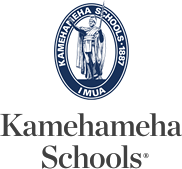Over five weeks of summer, five Wahi Kūpuna Internship Program (WKIP) students attending the University of Hawai‘i in Hilo and Mānoa, scoured some of Hāmākua’s craggy cliffs and rough terrain to survey, map and report on the ‘Umialiloa (‘Umi) birthplace corridor located on Kamehameha Schools’ lands.
‘Umi, who was a greatly beloved chief that unified the island of Hawai‘i, was known to have been born in the area throughout which he cultivated a highly, self-sustaining productive society. The land serves as a home to hidden stories of traditional practices in the 1600s.
Spanning approximately four miles of Hāmākua Hikina (East Hāmākua), the corridor runs through 10 ahupua‘a, from Koholālele to Kealakaha, touching the eastern boarder of the Hāmākua coastline.
Through participation in WKIP, students attain three college course credits in Hawaiian studies or anthropology. They also gain a critical framework of historical ‘ike to advance their training in cultural resource management.
“‘O ke kāhua mamua, mahope ke kūkulu. This epitomizes what WKIP is about,” said Dr. Kekuewa Kikiloi, UH assistant professor of Hawaiian studies and co-creator of WKIP.
The ‘ōlelo no‘eau (proverb), which translates to, “the site first, then the building,” chronicles the importance of learning first, then practicing that knowledge.
Objectives of the program cover development in five areas: culture, community, technique, academia, and career.
WKIP was initiated through relationships between UH’s Kikiloi; William Awa, of KS’ ‘Āina-Based Education Department; Kelley Uyeoka, executive director of Huliauapa‘a – a non-profit UH internship program, and Jason Jeremiah, KS Cultural Resources manager.
“For the last five years, Kamehameha has been focusing on internships so that we can accumulate the ‘ike and soon we’ll be able to restore these significant sites to functional use and to engage our communities,” said Jeremiah.
The internship projects, with goals driven by Kamehameha Schools’ Wahi Kūpuna Program, are supported through KS’ new strategic plan for 2015 – 2020. It’s operated within the Schools’ new Community Engagement & Resources Group (CE&R), which is tasked with identifying and building ways to engage communities within nine regions spanning Hawai‘i.
“This internship project is engaging community. It was created for the community and has been driven by the desires of the community,” said WKIP intern Alohi Maiava, who is finishing her last undergraduate year in Hawaiian studies at UH Hilo.
On the team of interns – led by University of Mānoa Ph.D. student studying indigenous politics, No‘eau Peralto – Maiava was responsible for examining the historical landscape of ‘Umi’s birth corridor. Separating the 10 ahupua‘a into three zones, including ke kula (flat landscapes), ke awāwa/kahakai (waterways), and ka pali kahakai (jagged cliffs), Maiava’s report covered the ecosystem of the coastal region prior to the plantation era.
With only three full-time KS staff members on KS’ Wahi Kūpuna Program team, the synergistic relationship between KS and consultants such as Nohopapa Hawaiʻi, non-profits such as Huliauapaʻa, and UH also allows Pauahi’s conservation lands to be used for education, and KS obtains the gathered information for use in restoring these traditional landscapes for use by future resource stewards from the community.
“Through more upcoming internship projects, Kamehameha will continue to increase community stewardship and engagement on our properties; restore key cultural sites and landscapes; and support educational, professional and career opportunities through the study of wahi kūpuna,” Jeremiah said.
The WKIP will soon be seeking a new group of interns to participate in the 2016 summer program. The exact location of the program is still being decided upon, but will be located on KS lands that contain significant wahi kūpuna.
In addition to the WKIP, KS’ Asset Management Department and UH Mānoa’s Hawaiian Studies Department have been working collaboratively the Mālama ʻĀina Field School. This summer, the field school will be held on KS’ lands in the moku of Waialua.
Scope of work in both internship opportunities will cover:
- Orientation to the region and study of the area
- Work with kamaʻāina
- Ethnohistoric research training, ethnography, and archaeological field methods
- Group planning activities
- Student cohort research projects
- A hōʻike for ʻohana and community
Recruitment for next summer’s Wahi Kūpuna Internship Program and UH Mānoaʻs Mālama ‘Āina Field School in Waialua will begin in the spring of 2016. Community college and University students may email ksinfo@ksbe.edu to get more information.
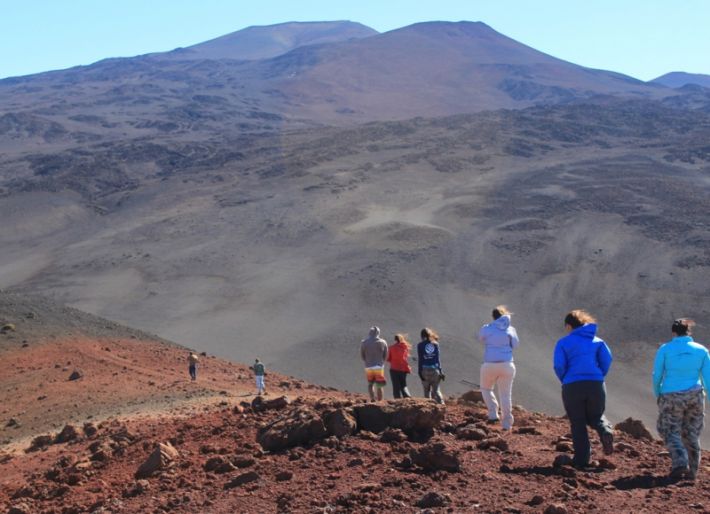
The interns linger after conducting a ceremony on a puʻu on Maunakea.

The ‘Umialiloa birthplace corridor is located in Hāmākua Hikina (East Hāmākua).

The 10 ahupua‘a of the ‘Umialiloa birthplace corridor.
TAGS
strategic plan,
ce&r,
community engagement and resources,
sp 2020,
natural and cultural resources,
sp2020
CATEGORIES
Kaipuolono Article, Newsroom, Department News, LAD News
Print with photos
Print text only

